Idea by
Natasha Reid
Natasha Reid Design
Call for ideas 2016
Intimate Infrastructures
Intimate Infrastructures

In response to the housing crisis in London, Intimate Infrastructures proposes a strategy for locking together social, cultural and economic values into a framework for human-centric housing delivery.
The proposals challenge the pervasive model of residential towers: Is there a strategy for maximising land available without incurring the formidable build costs of high-rise, to provide an economic housing solution for different groups in need? We ask if there is a way of working at a big scale, whilst also paying attention to quality of life, urban vitality, character of place and civic relations.
The scheme provides solutions for both private renters in the form of purpose-built shared homes, as well as considering the needs of local communities vulnerable to displacement.
We propose to capitalise on the land available within the city, to allow for urban intensification rather than sprawl, social integration rather than segregation.
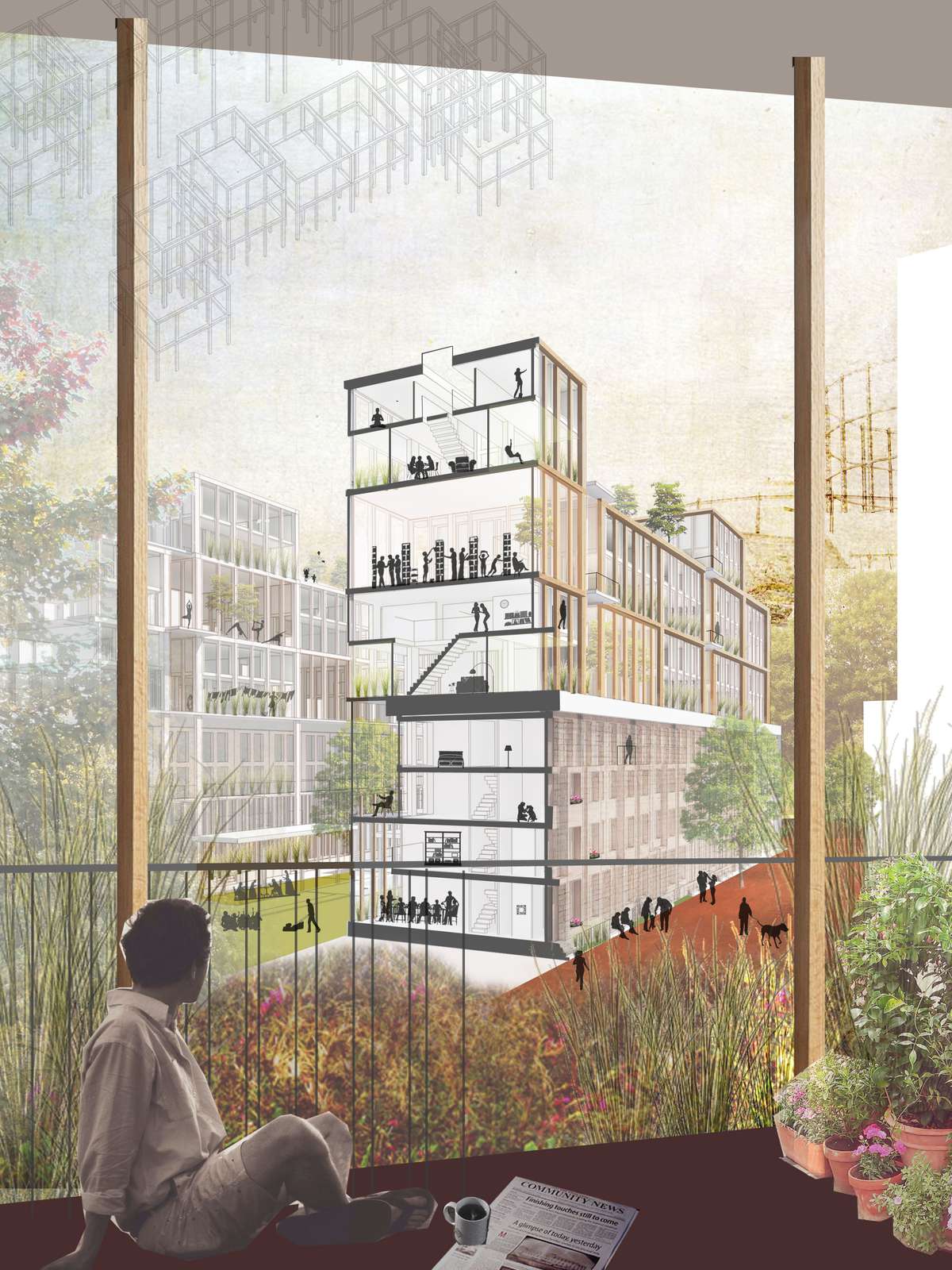
MIXING OLD AND NEW TYPOLOGIES
The study focuses on two groups: local communities at risk from radical urban renewal, and private renters who cannot access home ownership in the current crisis, from young professionals on low incomes to other more vulnerable or mobile city dwellers.
The project proposes a ‘missing typology’ of new-build shared housing to meet the demand of renters, while also accommodating larger family homes within a framework that focuses on qualities of place.
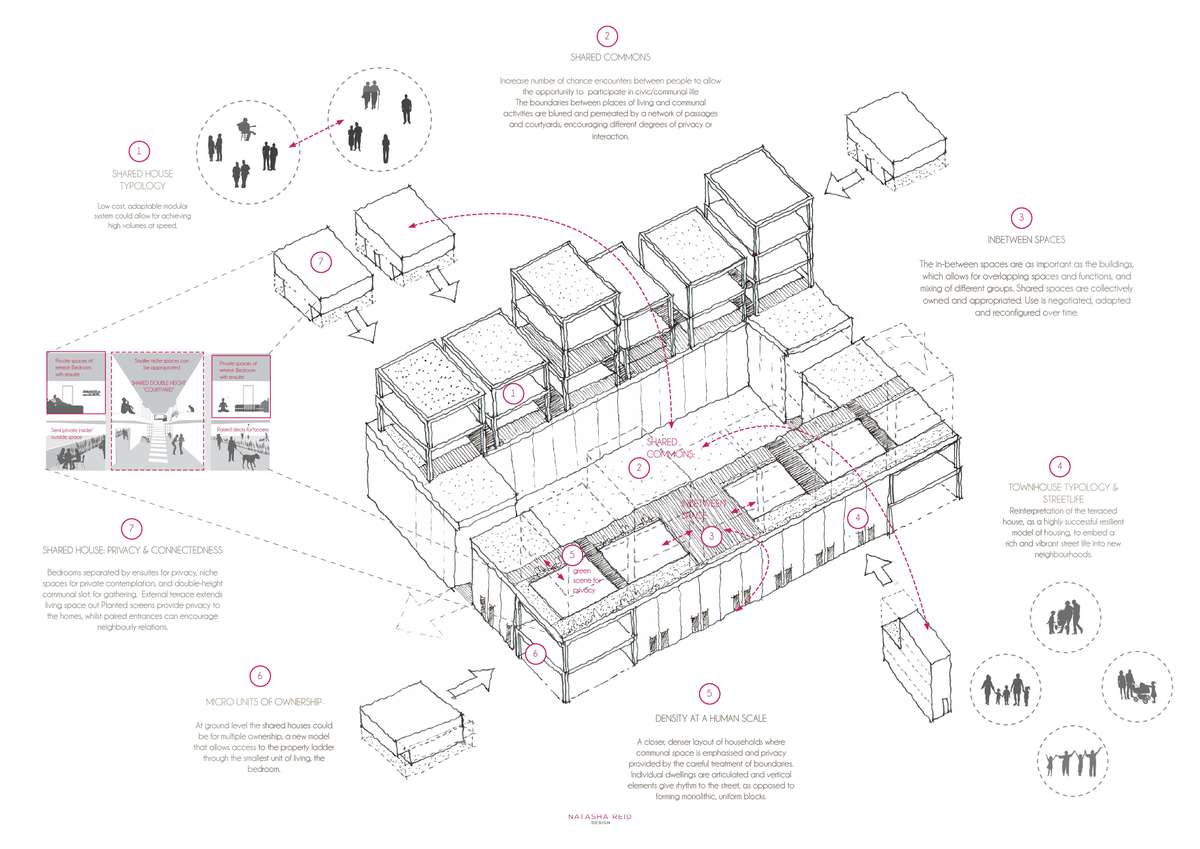
Currently, the private rental market is unregulated in terms of space standards. So new mass-produced, modular ‘shared houses’ are proposed as standardised components, to regulate minimum levels of living standards, speed up delivery and reduce construction costs.
The ‘shared house’ modules are low-cost, robust shell spaces which can be finished by inhabitants according to their means

Permanent infrastructure is provided at ground level in the form courtyards and owner-occupied townhouses, based on the London pattern of squares and to embed the importance of street-life into areas undergoing change. An adaptable frame structure above holds the shared homes, which can change, grow and recede according to future needs.
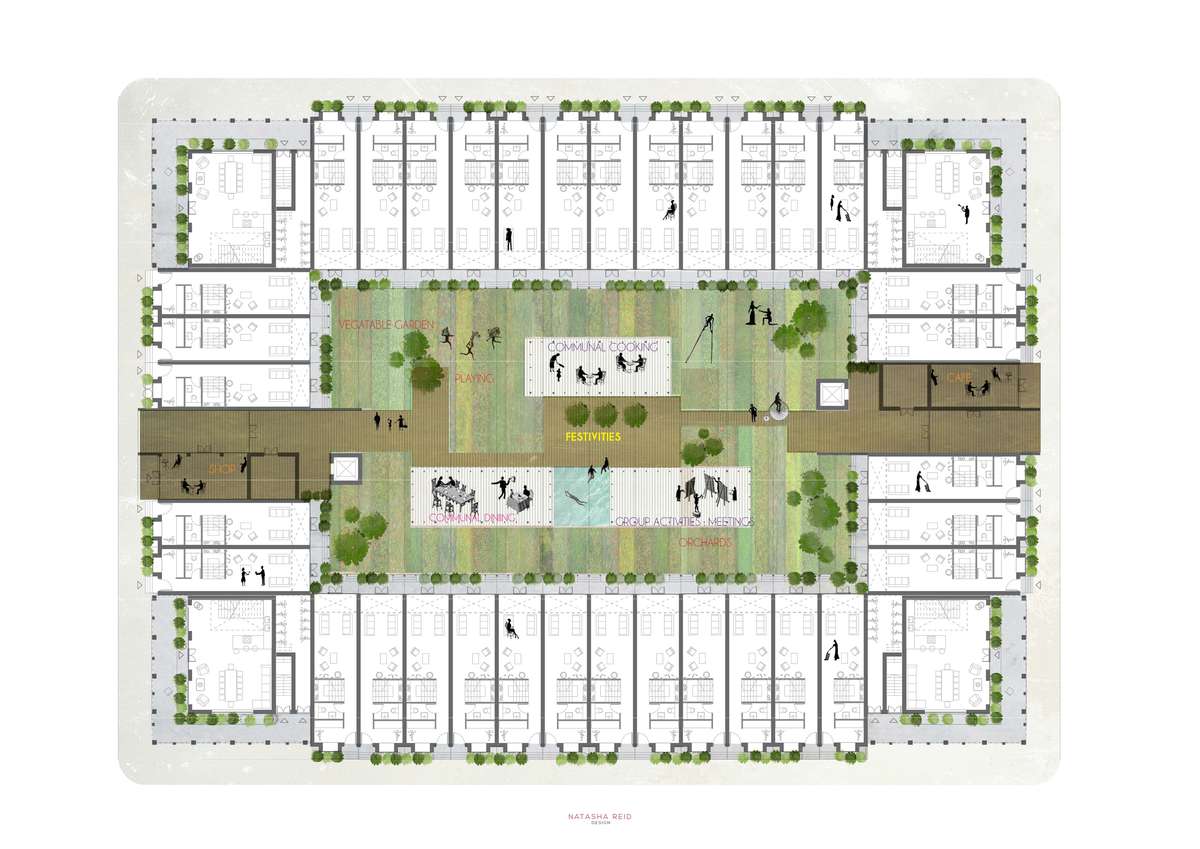
The collision of different tenures and groups reflects that city is homogenous and so the proposal provides a range of different conditions to suit people at different stages in life, incomes and lifestyle preferences.

We seek to interlock different types of communities; not ‘pepper potting’ but allowing opportunities for interaction through mixing space for social activities. To create a closer, denser layout of households, shared space is emphasised and privacy provided by the careful treatment of boundaries.
Intimate Infrastructures
Intimate Infrastructures

In response to the housing crisis in London, Intimate Infrastructures proposes a strategy for locking together social, cultural and economic values into a framework for human-centric housing delivery.
The proposals challenge the pervasive model of residential towers: Is there a strategy for maximising land available without incurring the formidable build costs of high-rise, to provide an economic housing solution for different groups in need? We ask if there is a way of working at a big scale, whilst also paying attention to quality of life, urban vitality, character of place and civic relations.
The scheme provides solutions for both private renters in the form of purpose-built shared homes, as well as considering the needs of local communities vulnerable to displacement.
We propose to capitalise on the land available within the city, to allow for urban intensification rather than sprawl, social integration rather than segregation.

MIXING OLD AND NEW TYPOLOGIES
The study focuses on two groups: local communities at risk from radical urban renewal, and private renters who cannot access home ownership in the current crisis, from young professionals on low incomes to other more vulnerable or mobile city dwellers.
The project proposes a ‘missing typology’ of new-build shared housing to meet the demand of renters, while also accommodating larger family homes within a framework that focuses on qualities of place.
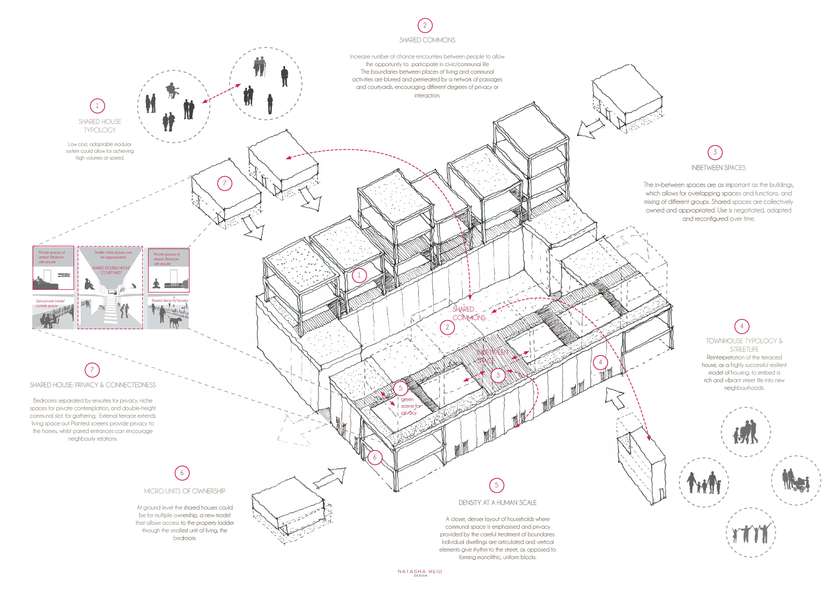
Currently, the private rental market is unregulated in terms of space standards. So new mass-produced, modular ‘shared houses’ are proposed as standardised components, to regulate minimum levels of living standards, speed up delivery and reduce construction costs.
The ‘shared house’ modules are low-cost, robust shell spaces which can be finished by inhabitants according to their means

Permanent infrastructure is provided at ground level in the form courtyards and owner-occupied townhouses, based on the London pattern of squares and to embed the importance of street-life into areas undergoing change. An adaptable frame structure above holds the shared homes, which can change, grow and recede according to future needs.
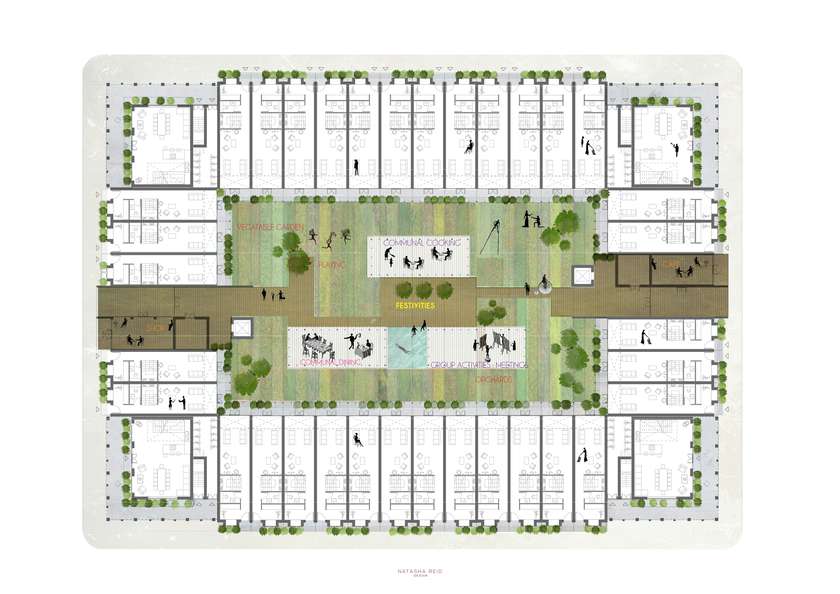
The collision of different tenures and groups reflects that city is homogenous and so the proposal provides a range of different conditions to suit people at different stages in life, incomes and lifestyle preferences.

We seek to interlock different types of communities; not ‘pepper potting’ but allowing opportunities for interaction through mixing space for social activities. To create a closer, denser layout of households, shared space is emphasised and privacy provided by the careful treatment of boundaries.